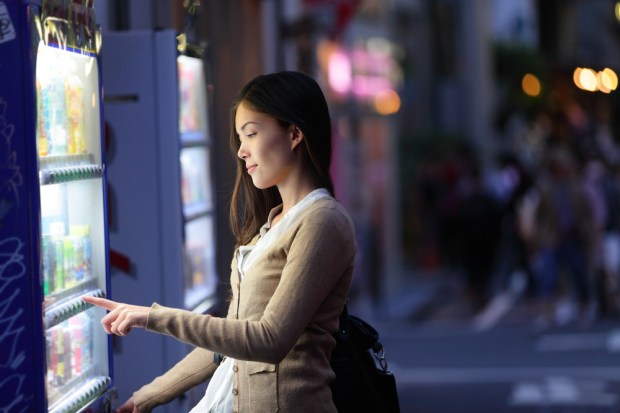Apparel Vending Machines And Other Tales From The Kiosk Takeover

Kiosk usage is on the rise across many industries and is expected to exceed $1 billion in overall market value by 2021, according to PYMNTS’ most recent Kiosk and Retail Report, a USA Technologies collaboration that studies trends in the unattended retail category.
Food and beverage kiosks are still the most common and familiar, claiming 20 percent and 15 percent of interactive kiosk market share, respectively, the report shows.
However, the presence of kiosks is fast becoming the norm in many other categories — photos, ticketing, clothing, parking, information, and ATMs, just to name a few.
Kiosks are also gaining ground when it comes to electric vehicle charging stations, self-service laundromats, and airport check-in counters, where self-service delivers consumer convenience and control over the experience.
If one is traveling and it starts to rain unexpectedly, there are surely few more welcome sights than that of a kiosk selling weather-appropriate clothing. If one’s phone dies in the airport, a kiosk selling charging cables might as well be manna from heaven.
At a higher price point, Chinese eCommerce giant Alibaba is planning to leverage artificial intelligence to sell cars in an unattended retail setting – and American tech startup Carvana is already doing exactly that with its coin-operated vehicle vending machines.
Of course, it’s not all practical convenience. Some kiosk applications border on bizarre (and some outright cross that line).
Then there is the Russian kiosk that allows Instagram users to buy followers and likes. For just $0.89, users can pick up 100 new followers. But if they really want to shell out, $850 will get them 150,000 followers and a guaranteed 1,500 likes per post. The kiosk can also print out photos from the social photo-sharing platform.
Speaking of social photo-sharing, Snapchat relied heavily on a kiosk strategy to get the word out about its Spectacles product, a pair of sunglasses that could record short video clips and send them straight to the user’s “Memories” folder in the Snapchat mobile app.
In instances like that, it’s not just about the product grabbing consumers’ interest; it’s about making the purchase into an event. Yet while customers could buy Spectacles from the kiosks, sales were not great – the real value of the approach for Snapchat was its novelty and the media attention it generated.
Kiosks have also made a powerful brand impression for the clothing company Uniqlo, which launched apparel vending machines in U.S. malls and airports last summer. Although customers only had two items to choose from — a thermal heat-tech T-shirt or a lightweight down jacket — the move drummed up a lot of media coverage, growing the brand’s name recognition outside its home country of Japan.
The rise of unattended retail and a wider variety of payment options at self-service locations has spurred some very innovative activity in the space as companies find new and creative ways to use kiosks as more than just a cheap sales point.
For many, kiosks become a branding mechanism or a delivery vessel for convenience — which, of course, still reigns in the world of customer experience and likely always will, creating a certain amount of job security within the kiosk space, at least for now.
